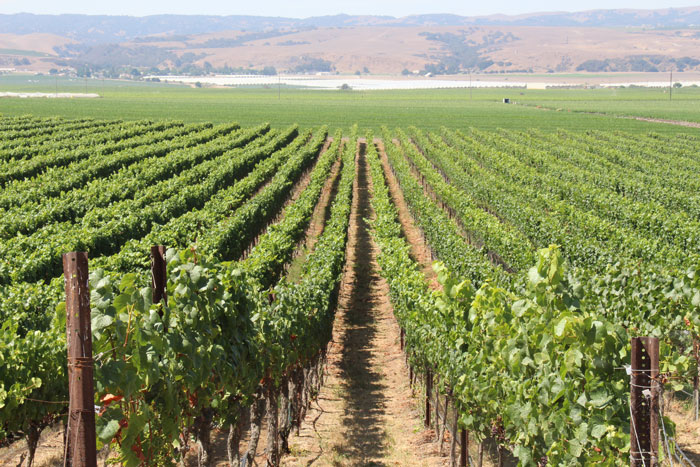
Bud break, when the scales of the winter buds of grape vines open to reveal wooly buds, does more than signal the start of a new season. It can provide valuable information for managing your vineyard. Ashraf El-kereamy, University of California Cooperative Extension viticulture advisor for Kern County, explains how in the April/May issue of Vit Tips, the UCCE San Joaquin Valley viticulture newsletter.
The winter buds, which were formed the previous season while shoots were growing, contain leaf and flower cluster primordia. Because bud formation and development is influenced by several physiological and environmental factors, the manner in which bud break occurs can offer insights to better plan your cultural practices this year, El-kereamy notes.
He offers some examples:
An early bud break, like this year, will be followed by earlier flowering and fruit ripening as well.
A reduced bud break percentage indicates fewer clusters per vine, which should be considered when cluster thinning, he says.
Uneven bud break may indicate a longer than usual harvest period.
A lower bud break could indicate frost damage or pest infestation.
Besides providing a preview of this year’s crop, the timing, percentage, and characteristics of bud break can also help you look back to evaluate cultural practices last season, El-kereamy reports.
Excessive nitrogen increases cane diameter or produces flat canes with a higher percentage of bud necrosis.
Shaded buds on the shoots of vigorous vines have a higher mortality rate and lower bud break in the spring. Here, canopy management and shoot thinning can help by improving sunlight penetration within the canopy, he notes
A higher concentration of Gibberellic Acid spray at bloom increases bud necrosis. “The concentration varies from one cultivar to another and needs to be reconsidered when lower bud break is observed,” El-kereamy says.
In some cases, the first five buds are more likely to suffer from shading and bud necrosis. This may indicate the need to reconsider training and the pruning systems.
Other lessons to be learned from bud break:
-Excessive irrigation may increase shoot growth and reduce bud break the following season.
-Post-harvest irrigation may affect the hormonal balance in the buds causing an increased level of abscissic acid and resulting in delayed and uneven bud break.
Warmer winters result in uneven bud break. In that case, El-kereamy suggests considering treatment with agents to break dormancy.
About the Author(s)
You May Also Like




